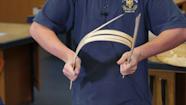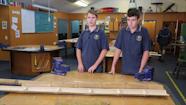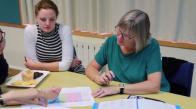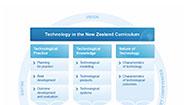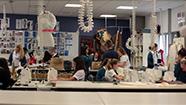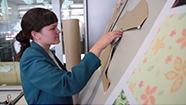Ritu Sehji upskilled through a Royal Society fellowship, allowing her to make industry links.
Industry experience enhances teacher knowledge
Transcript
Ritu Sehji: So last year I had an Endeavour Teacher Fellowship, offered to me by the Royal Society of New Zealand. It allowed me to work with my host organisation, Goodman Fielder. It helped me to upskill my knowledge and in all fields of food technology to enhance my teaching and learning.
I had a few main objectives, it was a self-directed research project that I was working on, and the first one was to look at processes and procedures and new product development. Then I also looked at alternate substitute ingredients and these ingredients were to increase the shelf life, but keeping in mind that it did not affect the sensory aspects of the food product. More and more the companies are looking at clean labels and it is really important to understand those specialist ingredients that make the product low in cost but keep the sensory aspect still the same. It helped me to look at substitute ingredients and also where to source them from.
Coming back to school this year, I have been able to maintain those links with industry and I have gone back to them and asked them for specialist ingredients, such as emulsifiers, high heat milk powder, and a few new flavours.
In the past I’ve looked at cross-curricular lengths and it’s usually in product design. The girls have gone in there and done some vacuum forming for moulds and looked at bending metal to make some metal cutters. But having visited the plants that Goodman Fielder owns and also visiting the universities, I went to see the head of faculty of science, and we discussed some ideas about how my students may be able to use the knowledge that the science teachers have to help them with their food technology projects.
So when the students have been creating their food product I have been encouraging them to go and speak to their teachers and see what the chemistry behind the ingredients was, or what the structure of the ingredient looked like. What would be the test that they would have had to undertake if it was lipids, or if it was a protein, what kind of testing would they need to do? If they needed to check viscosity, are there any tools available that would help them? Or a picture analyser? So always good because the students felt much more confident and because the teachers were already aware of what we were doing that they could seek assistance and feedback and talk to their teachers.
Related videos
Combining knowledge and practice (01:58)
Steve Andrew explains how understanding materials is essential for effective technological practice.
Linking hands-on experiences and understandings (03:54)
Hands-on experiences allow the students to see materials understandings in action.
Play, experiment, explore (02:55)
Steve Andrew lets the students see, feel, and play with products to develop their understandings in materials.
Finding materials to meet the specs (02:36)
Steve Andrew shares how students identify material specifications in a brief and then test materials to find those that are suitable....
School–industry relationship cuts both ways (03:36)
Steve Andrew and Terry Rillstone describe the way the relationship between St John's College and The Shop has benefits for them both....
Pushing the boundaries with materials (02:53)
Steve Andrew describes how his senior students have the confidence to select and work with unfamiliar materials.
Exploring unfamiliar materials (02:44)
Year 12 students from St John's College describe what they know about bamboo and how they are applying this knowledge to their projects....
Students and teachers talk about testing materials in year 11.
Manipulating, forming, and transforming
Students in year 10 describe manipulating, forming, and transforming materials.
Evaluating materials for an outcome
Steve Andrew and students talk about using their knowledge to test materials for their projects at year 12.
Year 10 students describe some of the attributes for the snake skates they are developing.
Senior students select their own issues
Year 12 students talk about the issues that they have selected for their projects.
School-wide programme planning (04:18)
Cheryl Pym explains how collaboration forms the foundation for school-wide planning in technology education.
Reviewing programme planning in years 7–13 (03:23)
At Diocesan School planning focuses on technology components for years 7–10, and establishing scholarship potential in year 13....
Review of curriculum implementation (03:49)
Margaret van Meeuwen explains how a cycle of self-review has enhanced delivery of curriculum.
A technology department with a digital and design focus (04:13)
Julie Clement shares how a design focus has engaged her students.
Resourcing for a digital and design focus (03:18)
Julie Clement considers how resources influence the authentic experiences for her students.







